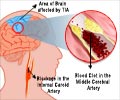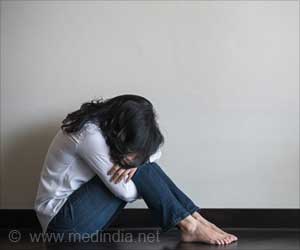Scientists at the American Stroke Association's International Stroke Conference, revealed an experimental therapy, to treat patients suffering from ischemic stroke.
Scientists at the American Stroke Association's International Stroke Conference, revealed an experimental therapy, to treat patients suffering from ischemic stroke.
Dr. Andrei Alexandrov, director of the University of Alabama at Birmingham (UAB) Comprehensive Stroke Center, and Dr. Carlos Molina, of the Vall d'Hebron Hospital in Barcelona, Spain, have discovered that patients can be treated safely with TCD in combination with a specific dose of the bubbles, called microspheres, and tPA.The microspheres, developed by ImaRx Therapeutics, are tiny gas-filled lipid structures that cavitate (rapidly expand and collapse) when exposed to ultrasound waves, helping to reopen blocked arteries and restore blood flow.
"These findings demonstrate that ultrasound combined with microspheres and tPA can be tested further in a pivotal clinical trial with the goal of providing a more effective treatment option for stroke patients by promoting faster clearing of blocked blood vessels as well as improved patient outcomes. It's very promising to see such results, which support the potential of this therapy as a more effective and expansive therapy for stroke patients," said Alexandrov, UAB professor of neurology.
During two trial phases, two different doses of ImaRx's MRX-801 microspheres were tested on 35 patients.
Cohort I and cohort II patients received 1.4 mL and 2.8 mL of microspheres respectively, while control patients received the standard dose of tPA alone.
The research team observed that complete recanalization was achieved in 120 minutes in 67 percent of cohort I patients, in 46 percent of cohort II patients, and 33 percent of control patients.
Advertisement
Besides that, the researchers also saw clinical improvement after 90 days in 75 percent of cohort I, 50 percent of cohort II, and 36 percent of controls.
Advertisement
ARU/S














